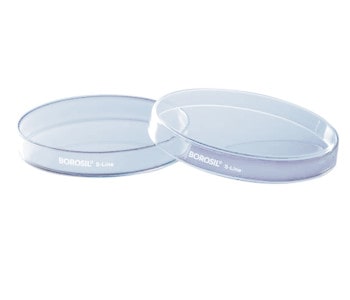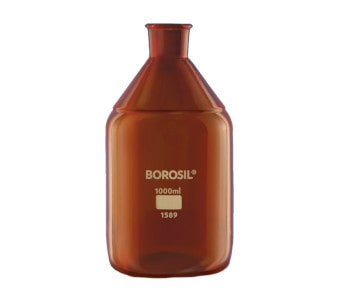Informationen about Petri Dishes
Petri Dishes have been developed in 1887 by the German bacteriologist Julius Richard Petri and are named after him since then. They have a flat, round shape and consist of a clear material. The diameter commonly measures 50 mm or 100 mm, but there are more sizes available. Petri Dishes are usually used in laboratories or research institutes and can be utilized for cell cultivation or also preparation and analysis of samples. For instance, they can be used with culture medium based on agar to create a so-called agar plate, which will supply water and nutrients to the growing microorganisms.
As the official representative for Borosil, GMPTEC offers you a big range of different Petri Dishes in dimensions between 50 – 200 mm diameter and up to 30 mm height. They are produced in a special manufacturing process, which assures the best possible quality of the final product. For example, all Petri Dishes undergo a special treatment in an annealing Lehr chamber. Where they are being heated and also cooled under controlled process parameters. This eliminates potential stress within the material. Due to their outstanding quality, our Petri Dishes can be sterilized and re-used repeatedly, are completely clear and flat, free of any impurities or turbidities.
In terms of material, you can choose between either 3.3 borosilicate glass according to DIN ISO 3585 / ASTM E488 or high-quality soda lime glass. Especially the 3.3 borosilicate glass offers a really good resistance against high temperatures and aggressive chemicals and can be used for a broad range of applications.
In case you are searching for additional glassware, our complete catalogue can be found here!
Features and Properties
- High Temperature Resistance
- High Chemical Resistance
- Extremly Clear Material
- Smooth Surfaces
- High Purity
- Many Different Sizes Available
Processes and Applications
- Cell Culture
- Microbiology
- Laboratories
- Quality Control
- Cultivation of Microorganisms
- Sampling Processes





